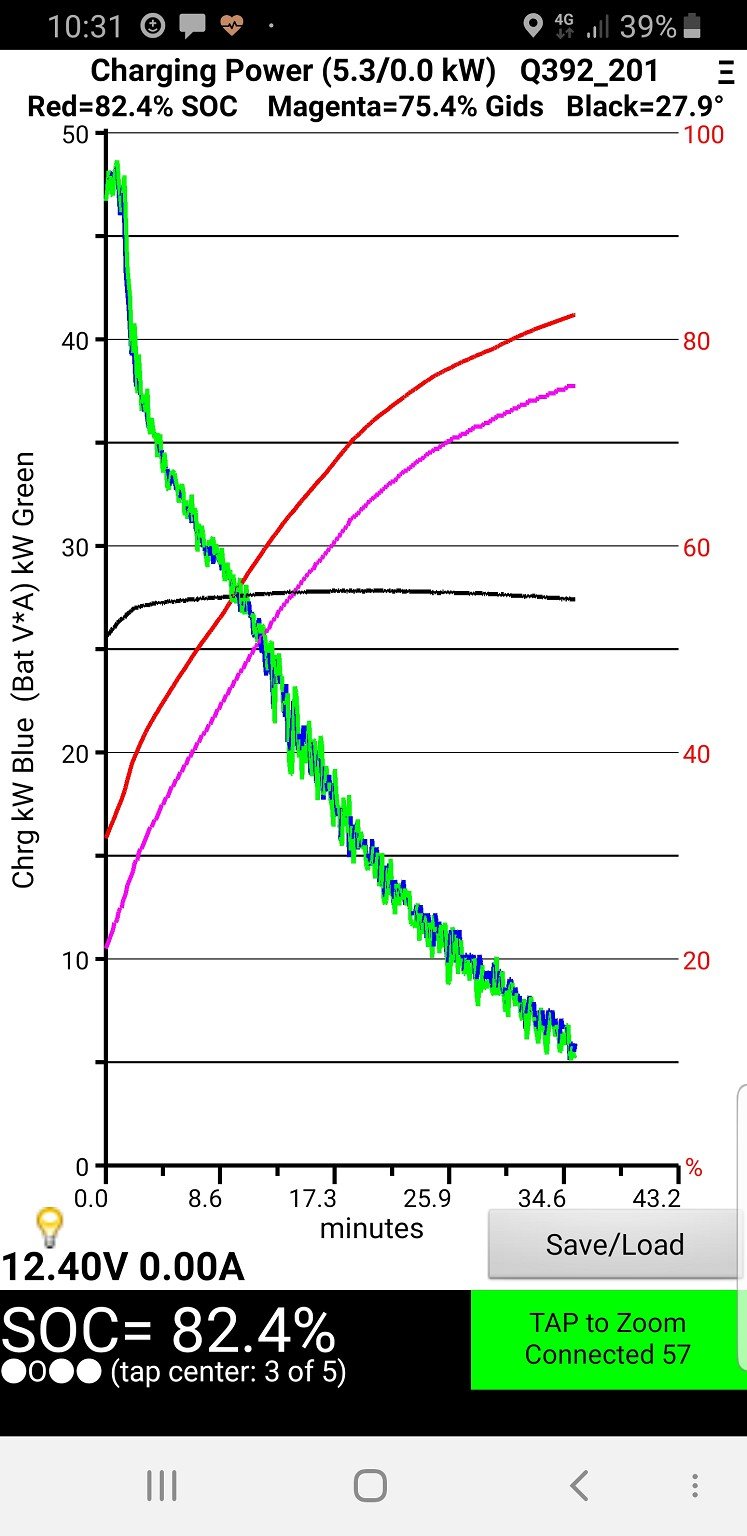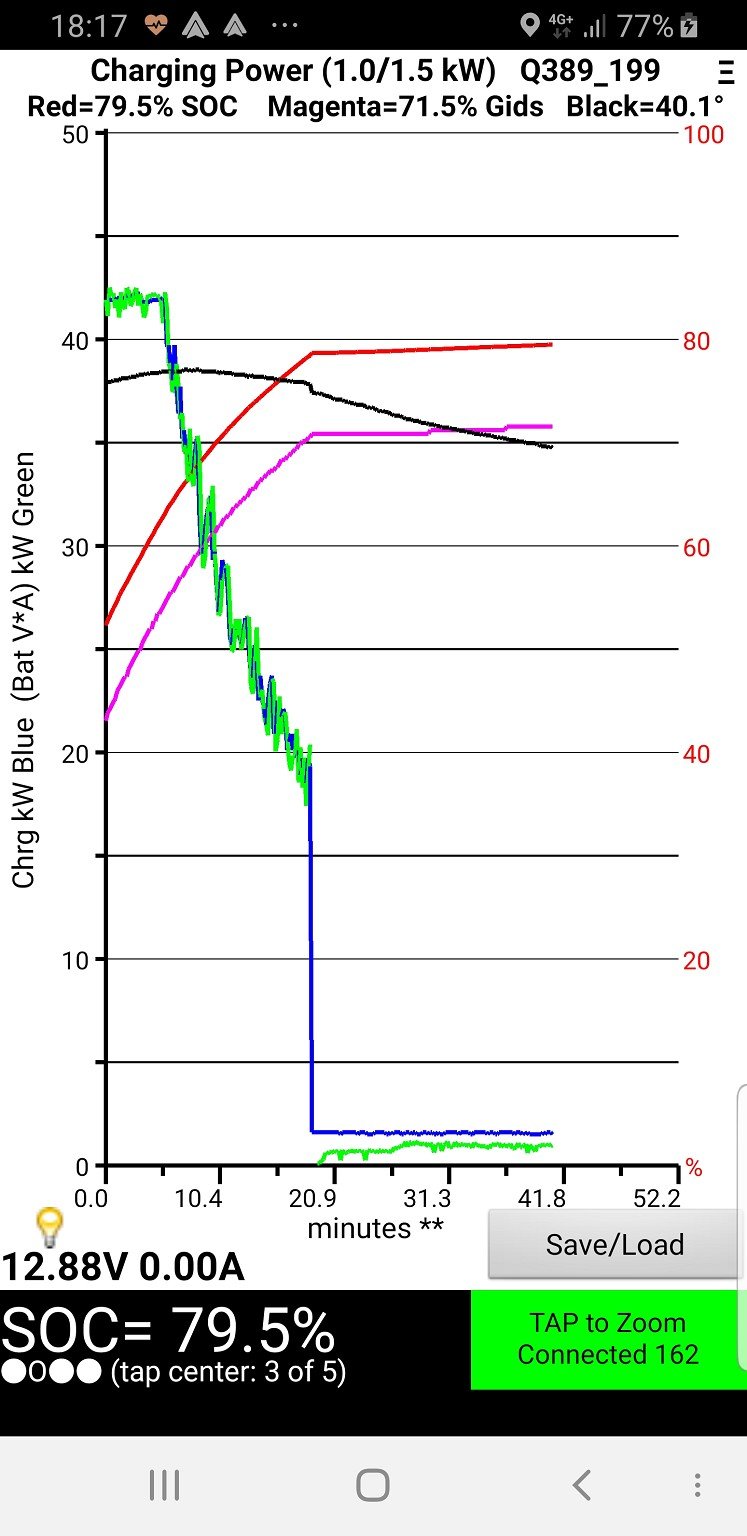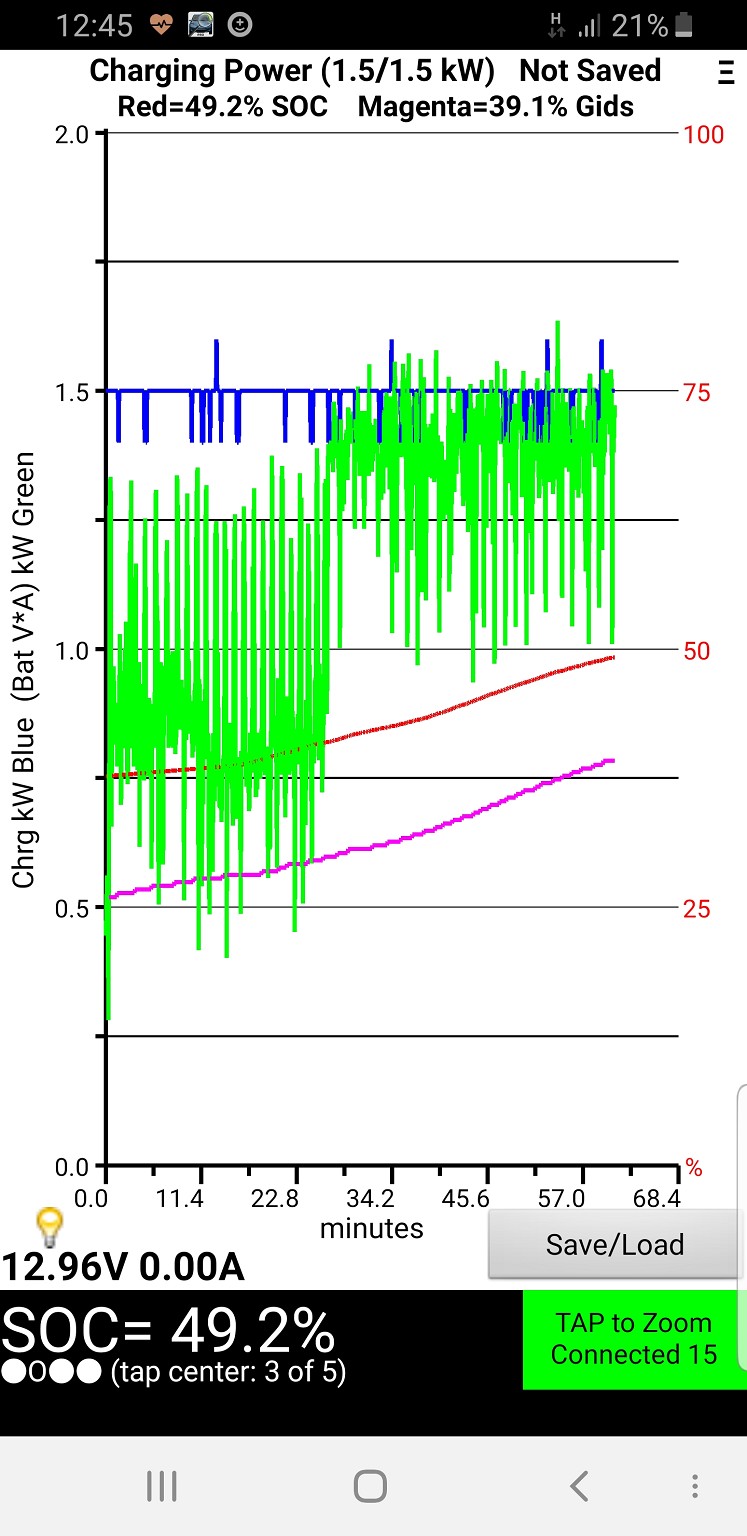FYI in case you didn't know, the Nissan e-NV200 is very-roughly a Leaf chassis with a van body; but it also has active temperature management so -- in principle -- it should be possible to go more than 300 km in a day, in a 24 kWh e-NV200, without overheating its batteries... but ... the less-aerodynamic body of an e-NV200, along with its lower "gearing" of its drive so that it can pull itself and a 0.5 tonne payload up a steep hill, give it a significantly lower km/kWh efficiency than a Leaf at motorway speeds, so it's still rather a challenge to go much more than 300 km in a day...
Today I ran a few experiments on my e-NV200, with the goal of figuring out how best to keep its batteries from overheating on long motorway trips. If you have an e-NV200 maybe you can see if you get similar results to the ones below?
Finding #1: the active cooling (a heat pump plus a fan) is operating during a DC fast-charge on my 2014 ex-Japan 24 kWh e-NV200, but (when the ambient air temp is about 20 degrees) the batteries still gain about 2 degrees during a fast-charge to 80% SOC.
Evidence for finding 1: See below for a charge from 22% SOC to 82% SOC, sensor 1 initially at about 26 degrees, rising to somewhat above 28 degrees, then dropping slowly after the charge rate drops below 15 kW.

Additional evidence for finding #1: see below for a 40-minute charge from 26% SOC to 40% SOC, with the first 18 minutes being a DC fast-charge (initially 44 kW, dropping to 20 kW) and then about 20 minutes of AC slow charge (1.5 kW: this being 8A downrated by 10% in my mode-2 EVSE, multiplied by 230 VAC). Note that the battery temperature started to drop after initially rising a couple of degrees, and that the slope of the temperature-drop is not hugely different between the DC fast-charge and the slow-charge.

Finding #2: you can use a DC fast-charger to lower your 24 kWh e-NV200's battery temperature by charging it above 80%, but it's rather expensive -- and you'll annoy anyone else who wants to use that charger. See below: a 14-minute session on a $0.25/min, $0.25/kWh fast-charger; total charge delivered was just under 1.0 kWh for $4.88.

Finding #3, The battery temperature drops about 4 degrees per hour when charging, if the ambient temperature is about 20 degrees. See the fast-DC charge above, and see also the 20-minute AC-charge at the end of the second screenshot in this posting.
Finding #4, the active temp control consumes about 500W when the battery temp is above 25 degrees. From below: a 1.5 kW AC charge delivers only about 0.9 kW to the batteries when they're hot; but the green and blue lines nearly coincide in the second half of this charging session (which was much quieter than the first half, as the fan-noise had been quite loud). At a very rough guess: 50W for the fan, 450W for the heat-pump, and maybe 100W for the inverter (assuming it runs at above 90% efficiency, and also noticing that the green-blue difference in the second half of the session is usually 0.0 kW, 0.1 kW, or 0.2 kW).

Moral #1: if your batteries are getting hot, you might fast-charge until they cool down. Indicative cost when the ambient air temp is roughly 20 degrees: ($0.25 / minute)*(15 minutes / degree) = ($3.75 plus 15 minutes of waiting-around) per degree of temperature drop. Alternatively: you could ask someone for access to their AC power point. That won't speed the temperature drop, but you won't be "renting" the (very spendy!) DC fast-charger while you wait for your batteries to cool -- and it's no faster than an AC slow-charge when your SOC is above 90%.
Moral #2: the best place on the NI for me to stop for a battery-cooling session in my e-NV200 is at the top of the Desert Road at night. The ambient air temp is reliably below 10 degrees, and the stars are spectacular. But YMMV, as you're unlikely to have an AC power supply.
Question: can you draw 8A from the 100 VAC 60 Hz inverter in an ex-Japan e-NV200 while it's AC charging? If so then you can (lossily!) have its motive battery "charge itself" (with the fan and heat-pump working to drop its temp) -- well that's a lossy process so you wouldn't want to do that when you're trying to cross the Desert Road, but you could try it after a DC fast-charge session to 80% that left your batteries overheated. The mode-2 EVSEs normally used with Leafs and e-NV200 will run all the way down to 100 VAC; and at 8A (derated by 10%, so actually 7.2A) that'll be only 720 W -- barely enough to run the heat pump and fan, so quite efficient really as a way of lowering the temperature of an e-NV200 using its motive battery as the inverter would hardly be producing any charging current. Worth a try perhaps, but I can't do it, because I had pulled the 100 VAC 60 Hz inverter from my e-NV200 to save some weight -- has a heavy steel mounting bracket... and annoyingly found that I had to leave its neighbouring junction-box in the circuit to avoid tripping HV DC fault codes, so I didn't gain much space. The only use I ever found for that inverter was charging a laptop -- as their power supplies are designed to work on any country's AC supply (including Japan's 100 VAC)...

